Redmi Note 8 Pro vs Realme 5 Pro: Who Wins The Grand Battle? [Must Read]
So, the much-awaited Redmi Note 8 Pro is here, and it will be taking on some of the best smartphones in the midrange segment. While Realme already has its own 64MP device out there, another quad camera Realme champ will take on Note 8 Pro, the Realme 5 Pro.
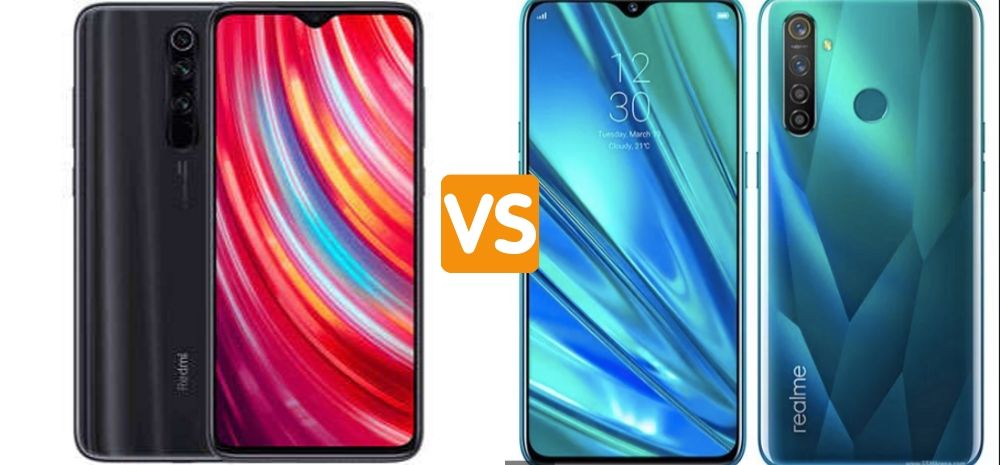
Realme 5 Pro also packs in enough juice to take on Redmi Note 8 Pro upfront.
So, who’s got it better?
Redmi has been a frontrunner when it comes to good budget and mid-range smartphones. Redmi Note 7 Pro is still a bestseller with so much of competition, and the successor will probably again sweep off the market.
Here’s an in-depth Realme 5 Pro and Redmi Note 8 Pro comparison decoding every feature and detail.
Contents
Design & Build: Glass vs Plastic
Redmi Note 8 Pro comes with a high-quality glass body, protected by Corning Gorilla Glass 5. It does feel premium. The glass sandwich built is backed by some of the striking gradient colour schemes.
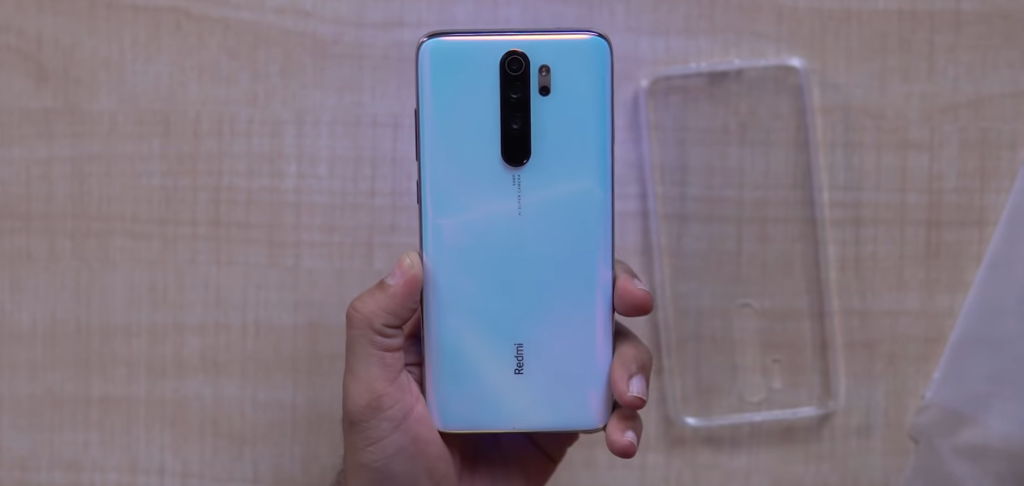
The Realme 5 Pro comes with a high-quality polycarbonate body. It’s plastic, but does feel premium. The high quality polycarbonate built is backed by some of the striking gradient colour schemes made to look like glass.
There’s a rear mounted fingerprint sensor on both, while each have stylish colour mixes. Realme 5 Pro misses out on a glass body, but the plastic makes it a more durable.
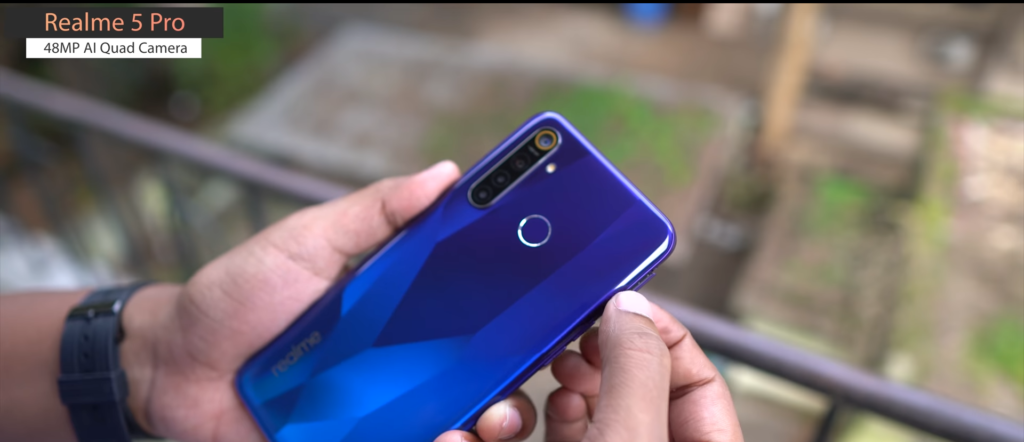
Most importantly, both the smartphones feel premium in hand, but Note 8 Pro here’s a winner with the glass built. The overall ergonomics are perfect on both the Redmi and Realme smartphones, they are sturdy, stylish and they feel good to be held.
Display & Viewing Experience: Who’s Got Thinner Bezels?
Redmi Note 8 Pro comes with a 6.53-inch Full HD+ screen offering an immersive 91.94 per cent screen-to-body ratio. It has a physical fingerprint sensor. It’s a notched display with very thin bezels and a slight chin down under.
The notch has got smaller on Note 8 Pro, and it’s turned into a V-shape, an upgrade over the U-shaped notch on Redmi Note 7 Pro.
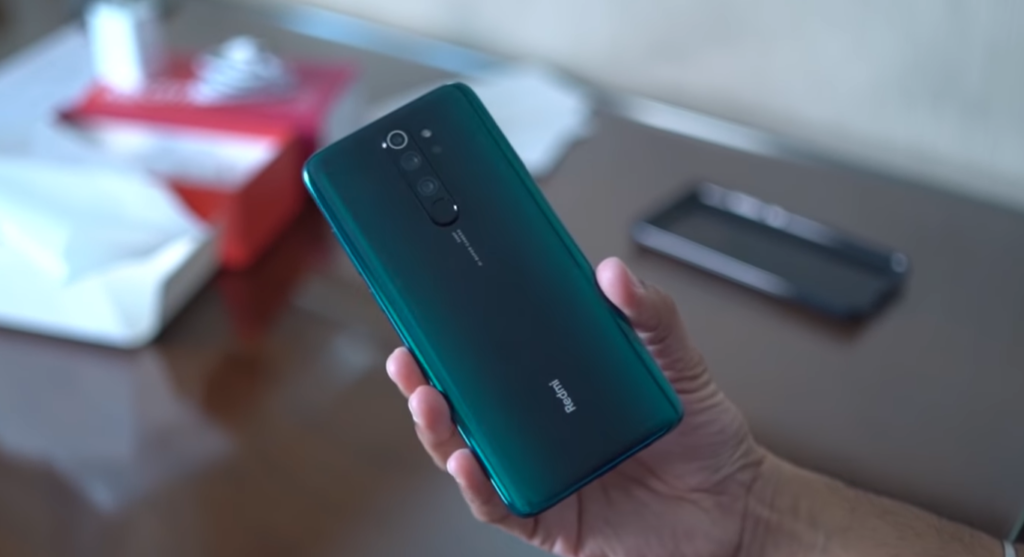
Realme 5 Pro features a 6.3-inch Full HD+ Mini-Drop display with 450 nits brightness and Gorilla Glass 3 protection.
Realme 5 Pro offers a screen-to-body ratio of 90.77 percent with a screen resolution of 2340 x 1080 pixels with a new smaller-sized V-shaped notch to offer a full-screen display.
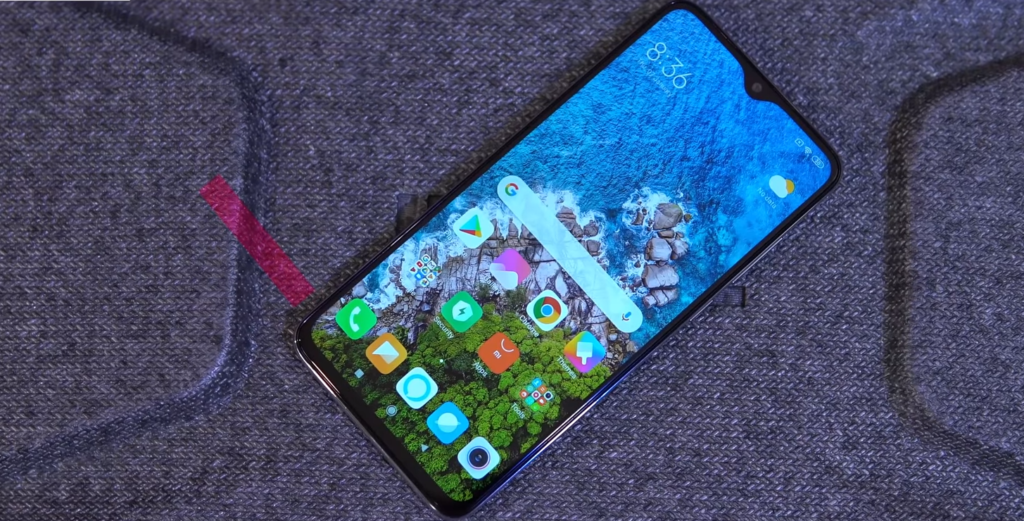
The displays on both the smartphones have very thin bezels. Realme and Redmi have done a great job in terms of the overall screen experience.
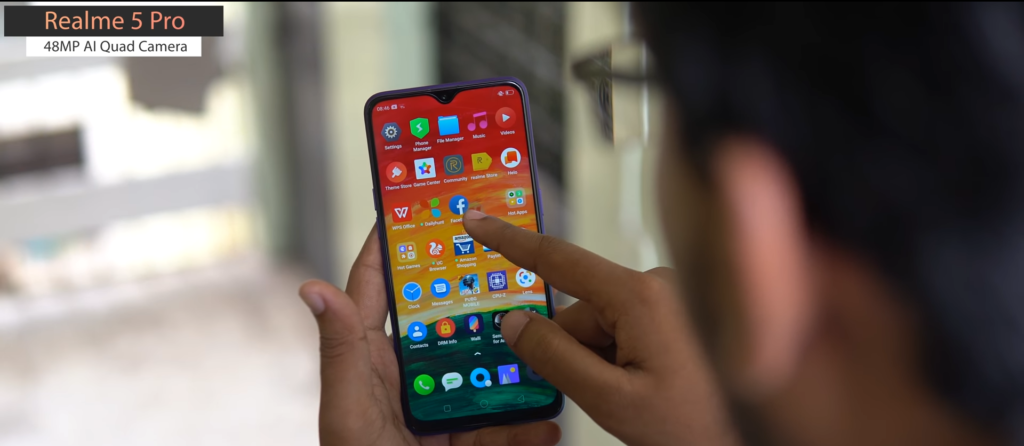
Both Redmi Note 8 Pro and Realme 5 Pro are apt choices for content consumption. Both displays are quite vibrant with minimal bezels on the sides with a little chin down under, Note 8 Pro has a thinner chin if compared.
Hardware & Storage: MediaTek vs Qualcomm
Redmi Note 8 Pro comes with the newly launched MediaTek Helio G90T processor. The new MediaTek octa-core Helio G90T chip can clocked at up to 2.05GHz. G90T uses ARM Cortex-A76 power cores and Cortex-A55 efficiency cores coupled with Mali G76 GPU with clock speeds of up to 800MHz for graphics.
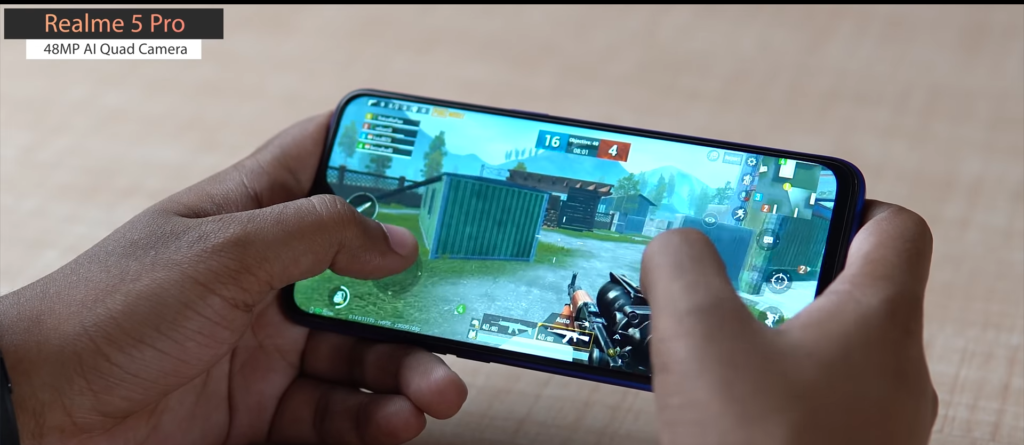
Qualcomm Snapdragon 712 chipset runs Realme 5 Pro. It’s been there in the market for sometime, and there’s hardly been any complaints regarding performance. Based on an 10nm architecture, it couples with Adreno 616 GPU. Snapdragon 712 is almost 10 per cent faster than Snapdragon 710 chip.
MediaTek Helio G90T has a special HyperEngine that will help the device to boost up mobile gaming experience.
G90T can optimize the networking engine to offer 50 percent faster response time from the server. Additionally, there’s a Dual Wi-Fi connection support letting the smartphone to simultaneously connect with two Wi-Fi bands or two routers at a time.
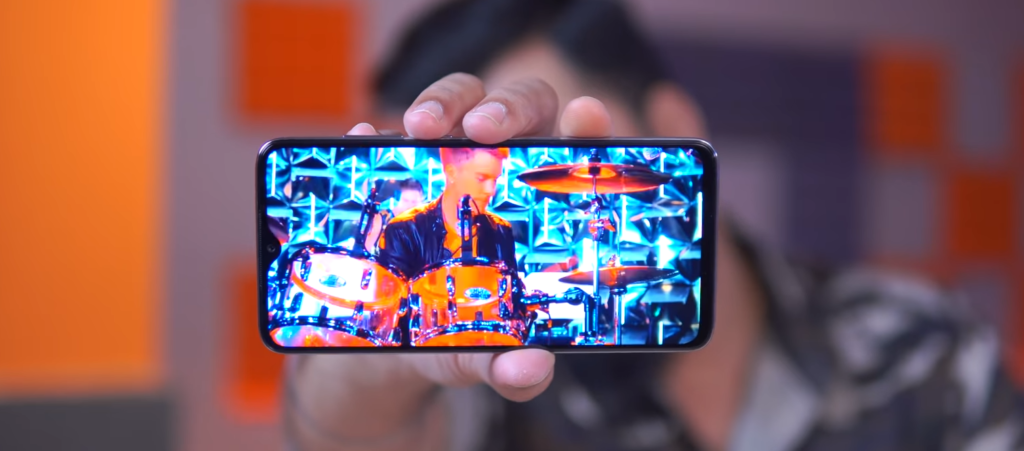
For Snapdragon 712, it offers 45 per cent better graphical performance and 2 times better AI performance, helping the Realme smartphone deliver around 25 percent better overall performance.
If you are wondering which would offer a more refined gaming experience, then to state it conclusively, both Redmi Note 8 Pro and Realme 5 Pro will offer seamless gaming experience.
But, Note 8 Pro have some definite advantage here with a dedicated gaming chip, and certainly it will be pushing the limits when it comes to extensive high-end gaming.
In terms of daily performance, Realme 5 Pro and Note 8 Pro both can without hiccups running almost all tasks and top games. There won’t be any noticeable difference in daily use given the memory-heavy apps, gaming and continued social media usage.
Both Redmi Note 8 Pro and Realme 5 Pro have different variants available in multiple storage sizes with separate models to choose from with upto 8GB RAM and 128GB storage, offered with 4GB, 6GB and 8GB of RAM along with 64GB and 128GB of internal storage.
Software: Color OS vs MIUI
Realme 5 Pro runs on the same Color OS 6 UI. The newly improved UI does offer some refreshing features compared to the previous OS with an easy-to-use overall structure and few tweaks. It’s a big upgrade over the last generation Color OS.
You can notice the differences on the notification toggle and some changes in the settings menu.
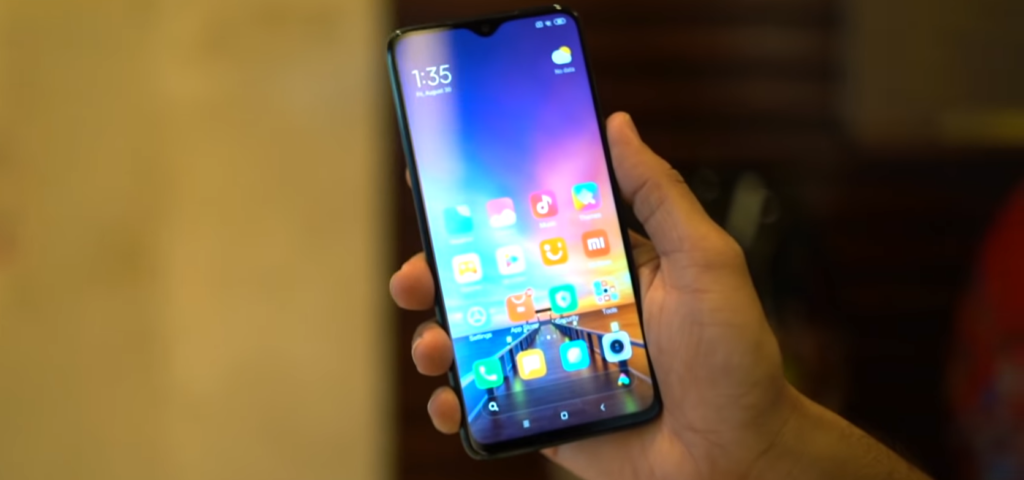
Based on the latest Android 9 Pie, the new ColorOS 6 UI packs in a bunch of user-friendly features and functions.
On the other hand, Redmi Note 8 Pro comes with the MIUI 10 based on the same Android 9 Pie. The smartphone will get the newly announced MIUI 11 in December.
Reamle is reportedly working on its own UI, RealmeOS. It’s supposed to launch by the end of the year, and will be pushed to all the existing Realme smartphones via OTA updates.
Coming to MIUI 11, it has a new minimalistic design with features as Dark Mode, Always On Display, Dynamic Clock and more. MIUI 11 also includes lock screen personalisations, a redesigned notification light, a wallpaper carousel and new dynamic wallpapers.
MIUI 11 has different new features including thumbnails of files in the file manager for easy searching, previews of documents directly within the file manager, all new document viewer, upgraded To-Do functionality, Tasks Integration, floating calculator and more.
MI Life has also been introduced with MIUI 11 including a step tracker, women’s health tracking and quick replies.
Added features include natural sounds for alarms, wireless print, dual clock, new Game Turbo, Mi Share, Gallery monthly view, new Panchang, casting, Mint Keyboard with support for 25 Indic languages and real-time emoji suggestions for Hinglish.
The Quad Camera Battle: 64MP vs 48MP
Both smartphones come with a rear four camera system. Redmi Note 8 Pro also comes with a quad camera system at the back. Note 8 Pro comes with the 64MP camera. The Redmi smartphone features a primary 64MP Samsung GW1 sensor with f/1.7 aperture, 2MP depth sensor, 8MP Ultra Wide lens and 2cm Macro lens.
Realme 5 Pro sports a 48-megapixel Sony IMX586 sensor, an 8-megapixel 119-degree ultra wide-angle camera, 2-megapixel macro lens and 2-megapixel depth sensor.
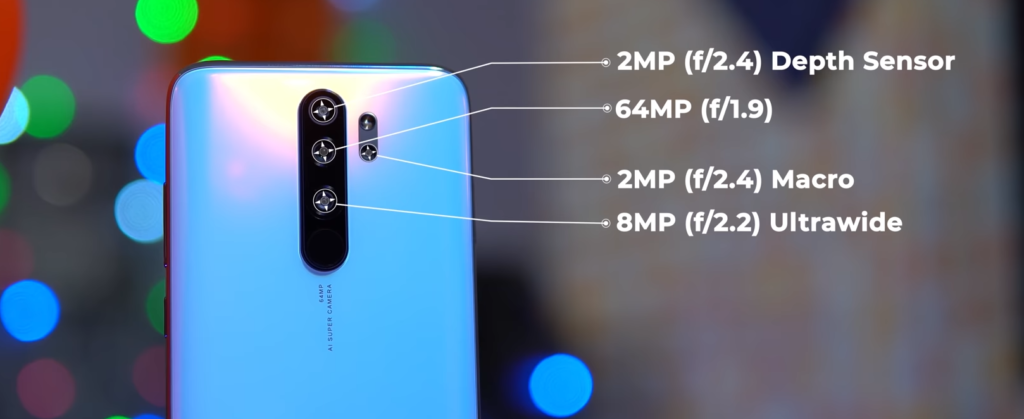
The 64MP Samsung GW1 1/1.72? sensor on Note 8 Pro can create shots 1.6 micron individual pixel size using image sensing technology via Tetracell to produce 16-megapixel images in low-light.
The Samsung’s 64MP GW1 sensor uses 4-in-1 pixel merging technology to merge four 0.8 micron pixels into a single 1.6-micron pixel to offer detailed images in low light conditions. It can shoot raw 64MP photos with the main sensor.
Up front, Note 8 Pro has a 13MP selfie sensor, while Realme 5 Pro has a 16MP selfie Sony IMX471 selfie sensor.
The selfies on both have a lot of details and it supports multiple shooting modes and filters to enhance selfies.
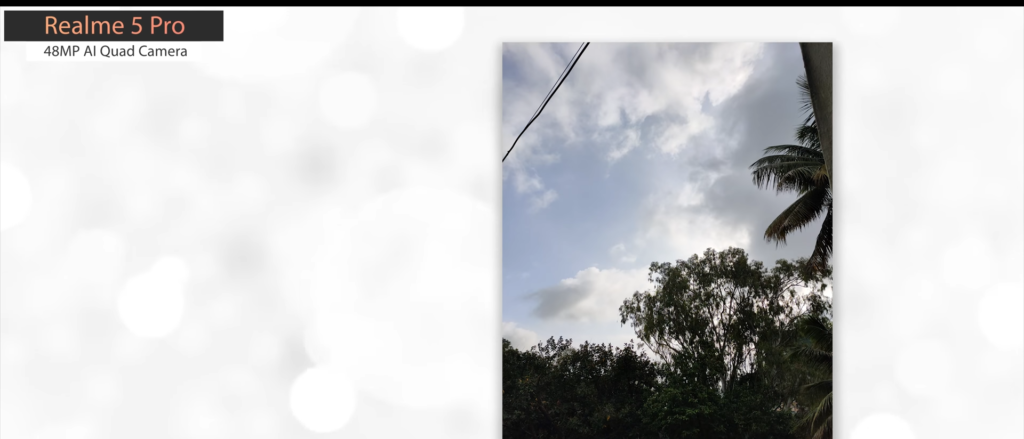
The AI-powered modes do a good job in terms of capturing details. The colours were a bit overdone and slightly artificial, but in overall, the front camera does a good job, be it wide shots or low light shots.
The rear four camera setup has multiple sensors for multiple purposes, and both Realme 5 Pro and Redmi Note 8 Pro has some advantages here.
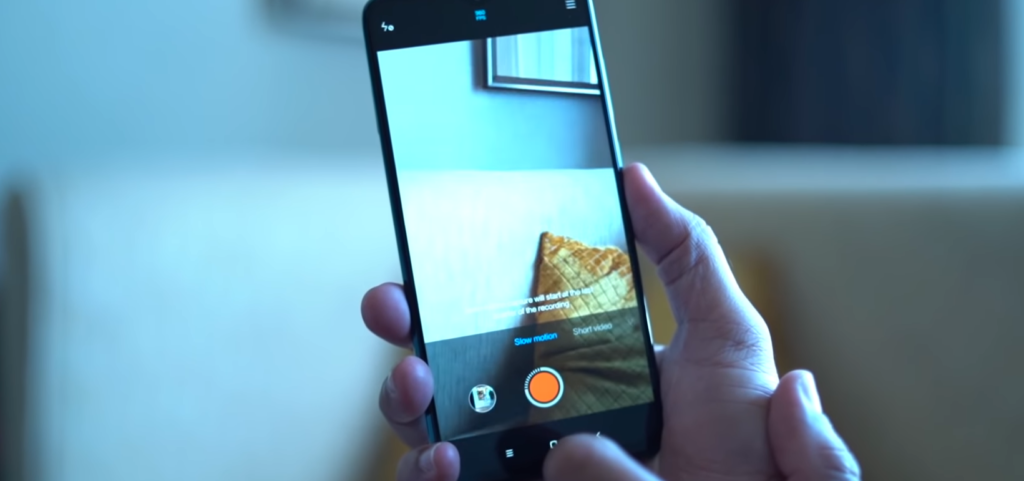
Both can take good detailed and sharp pictures in bright light with accurate colours. In poorly lit conditions, Redmi Note 8 Pro manages to click decent photos with almost accurate details and colours. We are yet to test the camera in-depth, but the initial results are very impressive.
The dynamic range on the Realme 5 Pro is good and it captures quite accurate details and produce good colours. The HDR works fine, and the ultra-wide lens work fine. The macro lens and portrait sensor does their job decently.
Coming to the biggest question, does 64MP triumphs 48MP?
In a single word, NO, it doesn’t, but there are differences you will find if you notice minutely.
The biggest difference comes with when you crop in upto 100 percent. There are subtle differences in detailing. Orelse both 64MP Samsung and 48MP Sony sensors capture a lot of details, dynamic range with accurate colours, even at places the 48MP Sony sensor outperforms the latest Samsung one.
The camera interface is quite minimal on both and each come loaded with AI-powered modes to enhance the overall photography. AI works on both sides to adjust to the particular lighting and adjust the filters. In all, both Redmi Note 8 Pro and Realme 5 Pro are good and make use of their respective lenses to take up some great shots.
Battery: Qualcomm QC 3.0 18W vs 20W VOOC 3.0 Fast Charging
Realme 5 Pro houses a 4,035mAh battery. The smartphone supports VOOC 3.0 fast charging with a Type C 20W fast charger included in the box. Realme 5 Pro can charge up the whole device under 80 minutes from 5 to 100 percent.
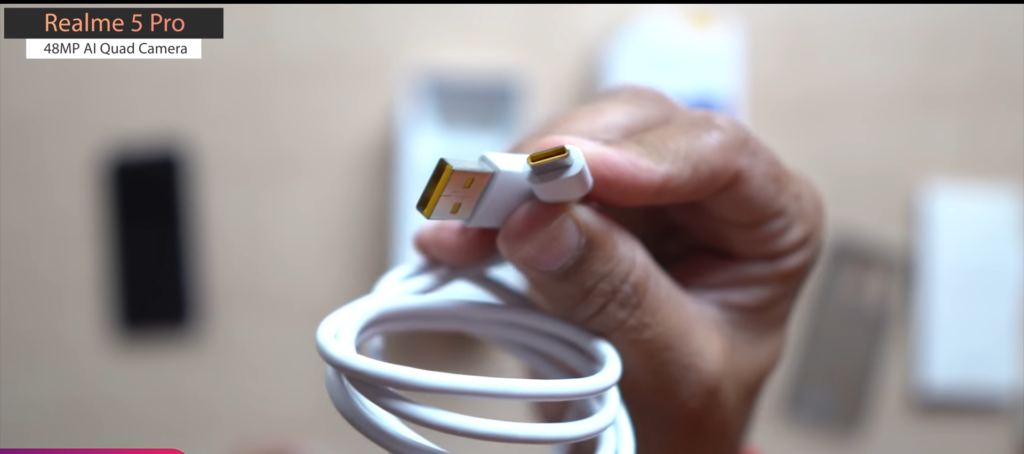
Coming to how it performs, the Realme device can easily last more than a day on heavy usage, and even a day and a half on moderate use.
In comparison, Redmi Note 8 Pro houses a similarly-sized 4,000 mAh battery backed by AI smart optimization to extend the phone’s battery to last longer supporting 18W fast charging technology. The charge time may vary from 90 to 100 minutes.
With continuous video playback, gaming and performing multi-tasking processes, both the Realme and Redmi smartphones can easily shoot up for a whole day without being charged.
Both Realme 5 Pro and Redmi Note 8 Pro ship with the respective 20W and 18W fast chargers inside the box.
Pricing & Availability: Who Has The Edge Here?
Realme 5 Pro in India starts at Rs 13,999 for the base model with 4GB RAM and 64GB storage. There are two other models with 6GB RAM and 64GB, and a top model with 8GB RAM and 128GB storage priced at Rs 14,999 and Rs 16,999 respectively.
The Realme smartphone is available via Flipkart, Realme online store and selected Realms offline partners.
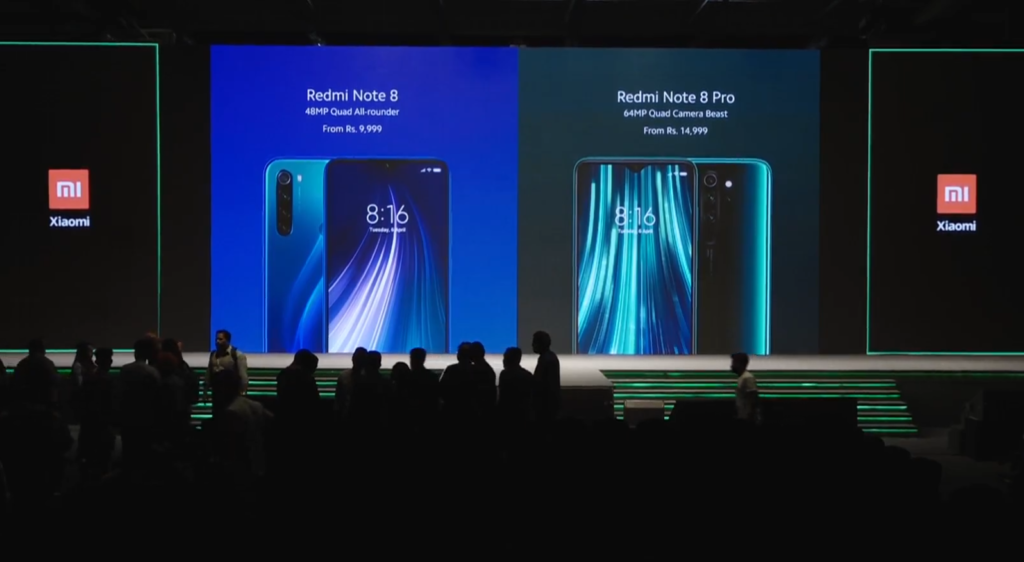
Redmi Note 8 Pro has been launched in in Gamma Green, Halo White, and Shadow Black colour variants in India. Note 8 Pro, the base model with 6GB RAM and 64GB storage will be available for Rs 14,999. The 6GB RAM with 128GB storage model will cost you Rs 15,999.
There is also a top-end 8GB RAM and 128GB storage configuration which will set you back by Rs 17,999. Redmi Note 8 Pro will be available via Amazon India, Mi.com and Mi Home Stores.
Realme 5 Pro vs Redmi Note 8 Pro: Who’s The Best Quad Camera Budget Smartphone?
To be plainly honest, both Realme 5 Pro and Redmi Note 8 Pro do offer some excellent features on-board, and the pricing is very affordable as well. The 64MP powered quad camera system is going to be the biggest USP on Redmi Note 8 Pro, and it certainly does make a good choice considering performance, cameras, display and battery.

In all, both the devices pack in a solid performance backed by a good processor, big display, a large battery and finally the four cameras for different occasions with the much talked-about 48MP Sony and 64MP Samsung lens backing it up.
Realme 5 Pro packs in a solid performance backed by a good processor, big notched display, a large battery and finally the four cameras for different occasions with the 48MP lens backing it up.

But Redmi Note 8 Pro has edge here with a glass body, 64MP camera sensor, dedicated gaming processor, larger display with thinner bezels and an all-new MIUI.
Both Redmi Note 8 Pro and Realme 5 Pro pack in a solid performance backed by really good processors, bigger displays, the brand new quad camera technology powered by the 48MP and 64MP sensors, large batteries, fast charging technologies and packed fast chargers.
Finally the icing on the cake is the pricing. Both the smartphones are aptly priced, but with the latest features and specifications, Redmi Note 8 Pro does end up a notch higher.

Comments are closed, but trackbacks and pingbacks are open.